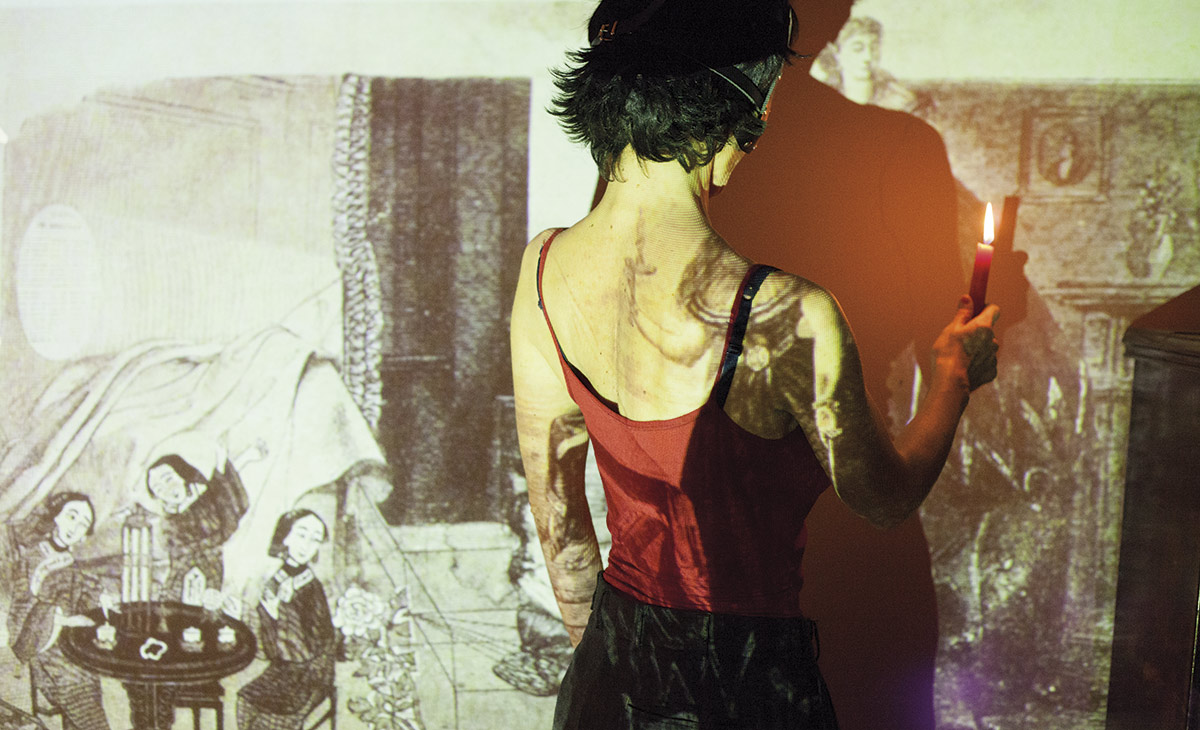Collage and collision An artistic collaboration around the dances and counterdances of gender, retrieves collage as a mode of associating images
Celso Martins, Expresso Atual Magazine 2013
One of the most interesting aspects of the artistic production of Maria Lusitano (1971) over at least the last ten years has to do with the fact that, in most cases, we do not have a name to define exactly what it is she presents. None of this has to do with sacramental question "Is this art?" or any doubts related to the type of support that she uses- typically the video. With Lusitano, we have a genre problem. Her constructions are too fictional to fit simply in the documentary field, whilst too informative to have that arty condition that rests the usual observers with the routine expectations typical of contemporary art .
"Queer Paper Gardens'' a collaboration with paula roush, Portuguese artist based in London, is no exception. In fact, it is an intricate installation that combines and intertwines countless ingredients (drawing, collage, photography, furniture, objects , video , etc. ) but, in effect, what makes it complex is not so much the profusion of materials used but the logic overseeeing it.
In the centre of this tension we find two works: "Une Semaine de Bonté," a book in seven chapters edited by surrealist Max Ernst in 1934, and "Dons des Féminines," composed in 1951 by surrealist poet Valentine Boué Penrose in response, through the same means of collage, to Ernst’s book. But if Ernst associated a set of images where the feminine element was consecutively subjected to violent abuse by men or monstrous beings that were clearly male, Penrose’s implicit answer generates a pattern of the feminine placed outside the domestic space, open to travel and the unknown, and that is, on the contrary, an image of power and emancipation.
Without ever getting entangled in the ease of an obvious feminist rhetoric, "Queer Paper Gardens'' is organized around this tension that infects each of the seven steps of installation (an allusion to the seven days of the week used by Ernst). The result is not just a revisitation of collage’s creative device associated with Dada and Surrealism as an experiment dated and historically situated, but a reflection on the survival of that mechanism in the contemporary. Firstly, we need to say that the installation itself works like a huge collage, if we think that it associates different nuclei that in this association never lose its integrity. Additionally because, as in collage, the creative process herein tends to converge references that appear to come out of watertight worlds but which are able to meet and generate sense.
Let’s consider the drawing of large dimensions in which female homoerotic scenes intertwine with in images of architecture or fashion of different historical times, or the collages that use nineteenth century illustrated magazines manipulated in a way that gives them a behavioral and cultural meaning well beyond the one they had in their epoch. Or, in a central position to all this, the film takes the title of the exhibition, which is both a documentary about Valentine Penrose and her world and a bold stream of cultural signs contaminated by the question of the genre, stretching back to Victorian epoch or travel until the "Snow White" of Disney, or the cult film " the Hunger" by Tony Scott.
If, as Max Ernst himself once suggested, it is not the glue that defines collage, then what survives of it today is a certain idea of the visual thinking in network, where the images are associated in infinite combinations. Maria Lusitano and paula roush use this mechanism to illuminate ghosts, find affinities or detect collisions between things
